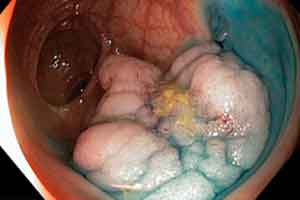Herbal Medicines: A Legal Perspective
by Everaldo Attard
Introduction
Although within the European Union, herbal medicines are considered as alternative medicines or are used in adjunct therapies; their use is considered as an important component of the European health care system. This is due to the fact that herbal medicine forms part of the European tradition. In spite of the diversity of opinions between Member States, herbal medicines used in different therapies should be made available to all European citizens. However, although the efficacy of certain medicines is rather disputable, the European Commission aims at safeguarding the European consumer by ensuring that these medicines are safe and of an adequate quality.
Is the product a medicine?
A medicine is defined as a substance or group of substances that correct or re-establish balance within the body. If this adjustment is on a physiological basis, the product may fall under the Food Supplements Directive (CD 2002/46/EC)1 or the Cosmetics Directive (CD 76/768/EC)2. Products that prevent diseases have been in great dispute and therefore such products, which may be classified as either medicinal products and/or food supplements, are usually subjected to a case by case assessment. These products are also called borderline products, until they are classified as medicinal or non-medicinal products.
What types of medicines do exist?
There are different types of medicines, primarily depending on their nature and purpose of use. If the product is derived from one or more herbal substances, then the product may be considered as a herbal medicinal product. If this product is a synthetic chemical entity, a highly purified extract or single constituent from a natural source (plant, animal or mineral origin), the product should satisfy the criteria laid under Council Directive 2001/83/EC to be granted a marketing authorisation3. Another category of herbal medicines that fall under the 2001/83/EC Directive are homeopathic medicinal products, that however have to be presented as diluted (potentised) medicines.
Chemical entities (modern medicines) are regulated under Council Directive 2001/83/EC and all subsequent amendments. These include chemical synthetics, homeopathic medicines and isolated chemicals derived from medicinal plants. In the manufacture and marketing authorisation of herbal medicines, European manufacturers and wholesale distributors faced several difficulties to fulfil the criteria laid in this Council Directive in order to market their products. Due to a long standing history of use, the requirement that a medicinal product should satisfy the proof of clinical efficacy could not be fulfilled with herbal medicines. This places herbal medicines in a different category from chemical entities. In fact, a parliament legislative resolution was issued in November 2002 as a proposal to amend Council Directive 2001/83/EC to take into consideration this important aspect which otherwise will put the herbal industry at a halt. There was the need to consider herbal medicines as a group of medicinal products of their own, which should satisfy the safety and quality requirements, but could be exempted from the efficacy requirements. As a matter of fact, a new Council Directive 2004/24/EC4 was issued dealing specifically with herbal medicinal products with known traditional uses.
With this, herbal medicines were categorised into:
- Herbal medicines with a long-history of medicinal usage within the European Community, the so-called Traditional Herbal Medicinal Products (THMPs), and
- Herbal medicines which have been tested clinically and showed clinical efficacy, the so-called Herbal Medicines with a Well-Established medicinal Use (WEU).
In fact, these two categories fall explicitly under different Council Directives.
Herbal medicinal products are further categorised into:
- Herbal Substances. These mainly include unprocessed herbal materials and are defined by the binomial botanical name and plant part used. These include also algae, fungi, lichen and certain exudates, in their fresh or dried state.
- Herbal Preparations. These include processed or treated herbal substances, employing a certain degree of transformation, such as extraction, expression, fractionation, distillation, fermentation or concentration. Such preparations include comminuted or powdered herbal substances, essential oils, plant extracts, tinctures and other herbal formulations.
Conclusion
Once a product fulfils these conditions, the HMP can be identified as a THMP or a herbal with a WEU. A decision tree5 has been prepared to facilitate classification. In most cases, there is no clear distinction as at what dose one should consider the product to be a HMP or a food supplement. Although there is a list of herbal substances that are exclusively found in HMP, in other cases, assessment should be carried out on a case per case basis.
References
- Directive 2002/46/EC of the European Parliament and of the Council of 10 June 2002 on the approximation of the laws of the Member States relating to food supplements, Official Journal L 183; 51-57.
- Council Directive 76/768/EEC of 27 July 1976 on the approximation of the laws of the Member States relating to cosmetic products, Official Journal L 262; 169.
- Legal Notice 386 of 2005. MEDICINES ACT, 2003. Wholesale Distribution of Medicinal Products Regulations, 2005; B 5528 – B5532.
- Directive 2001/83/EC of the European Parliament and of the Council of 6 November 2001 on the Community code relating to medicinal products for human use, Official Journal L 311; 67-128.
- Decision tree for the classification of traditional herbal medicinal products and herbal medicines with a well-established use at http://staff.um.edu.mt/eatt1/THMPs/



